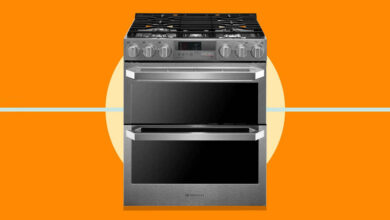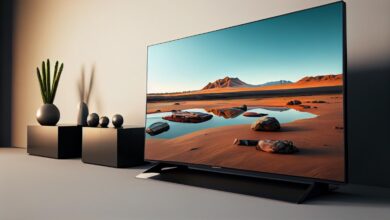What is the Coldest Fridge Setting and When to Use It

Maintaining the proper refrigerator temperature is crucial for food safety and optimizing your appliance’s efficiency. But do you know how cold is “cold enough” and when to dial it down to the max? This comprehensive guide explains refrigerator temperature settings, identifies the ideal levels for food preservation, and provides tips for getting the most out of your fridge.
Introduction
The temperature inside your refrigerator directly impacts two important factors – the safety of stored foods and energy consumption. Keeping your refrigerator too warm promotes bacteria growth on perishables, increasing the risk of foodborne illnesses. But running it colder than necessary can waste energy.
This article provides guidelines on optimal refrigerator temperatures for food safety, when you may need to adjust to the coldest setting, and how to balance chilling and efficiency for your household’s needs. We will also cover basic refrigerator setting terminology, troubleshooting issues, special considerations for different foods, and tips for temperature regulation during seasonal changes. Properly managing your appliance’s coldness can save food and money while protecting your family’s health.
Understanding Refrigerator Settings
The temperature controls on most household refrigerators have a range of settings, often numbered 1 through 5, to indicate coldness levels from warmest to coldest. Some models may use descriptive terms like “Cold”, “Colder” and “Coldest” instead of numbers. Usually, 3 or “Medium” is the default average setting. Selecting 1 would be the warmest and least energy-intensive option, while 5 or “Coldest” would maximize chilling power.
| Setting | Typical Description |
|---|---|
| 1 | Warmest |
| 2 | Cold |
| 3 | Colder / Medium (default) |
| 4 | Very Cold |
| 5 | Coldest |
Understanding what these settings mean in degrees is key for dialing into optimal food storage temperatures.
The Coldest Fridge Setting Explained
The coldest setting on a refrigerator is typically denoted by the highest number, 5, or the descriptor “Coldest”. At this maximum chilling setting, the internal temperature drops as low as 34 to 29 degrees Fahrenheit (F) / 1 to -2 degrees Celsius (C). That frigid air helps keep perishable foods safely chilled for longer storage durations.
Why Temperature Management Is Crucial
According to food safety experts, including the United States Department of Agriculture (USDA) and the Food and Drug Administration (FDA), the “danger zone” for foodborne bacteria growth is between 40°F and 32°F (4°C and 0°C). Keeping refrigerated foods consistently below or above the danger zone limits pathogen spread. Setting your refrigerator’s coldness just above freezing ensures perishables stay fresher longer within safe thresholds.
However, chilled air alone cannot override all risks. Cross-contamination from raw meats, inadequate containment, and expiration must also be managed. Maintaining vigilance across multiple food safety practices provides overlapping protection against illness. However attentive refrigerator temperature management establishes the cold storage foundation.
When to Use the Coldest Setting
Several circumstances may warrant temporarily adjusting your refrigerator down to its maximum chill mode:
- Hot summer months – When kitchen heat rises, the fridge works harder to maintain its interior temperature. Setting it to “Coldest” during seasonal extremes gives the compressor an extra boost against ambient warmth from outside air and frequent openings.
- Large food loads – Stuffing your refrigerator after stocking up at the grocery store burdens the appliance with keeping additional mass cool. Turning the coldness up prevents recently added content from warming everything else.
- Long power outages – After extended blackouts or brownouts, using the coldest setting accelerates cooling and protects thawing foods until temperatures can re-stabilize.
Running at maximum power over 24/7 is generally unnecessary for basic household use. But periodically adopting this extreme setting as situations change can support food preservation.
Potential Drawbacks of the Coldest Setting
The main downsides of letting your refrigerator continually rip at maximum chilling levels involve energy consumption and potential food freezing.
dialing the temperature too low risks overworking the compressor. Like an car engine revving at full speed, this exertion inefficiently burns more energy to power deeper cooling. It also degrades the appliance’s mechanisms faster. So unnecessary constant max cold impact costs and longevity.
Additionally, coldest settings in the 29°F to 34°F (-2°C to 1°C) range can actually start to freeze contents like lettuce, tomatoes, eggs, and leftovers not meant for icy suspension. The unexpected crystallization damages textures and changes flavors.
Finding the Goldilocks balance between “Too hot”, “Too cold”, and “Just right” for your refrigerator takes some trial and error paired with vigilance. Optimization balances preservation, energy use, and appropriate chilling across all your household’s food storage needs.
Adjusting Your Fridge Setting
Since every refrigerator model varies slightly in its temperature control scale and chilling power, generic number settings alone cannot guarantee perfect preservation ranges. Referencing your appliance’s user manual for clarification on settings can help connect the dots to actual coldness.
Here are the general steps for accurately adjusting and managing your refrigerator’s setting:
- Physically locate temperature controls – External digital readouts or interior analog dials usually offer access.
- Identify current setting – Note whether numbers, descriptive terms, default position, etc. help indicate existing coldness.
- Experiment with incremental shifts – Based on current preservation needs, adjust setting up or down by 1 level at a time.
- Use a thermometer – Place an external monitoring gadget on central fridge shelf and verify new temperatures over next several hours.
- Repeat as necessary – Continue tweaking the setting until thermometer confirms optimal interior temperatures matching usage needs between 34-40°F (1-4°C).
Regular thermometer spot checks following environmental kitchen changes or refrigerator disruptions helps keep settings aligned with proper food safety ranges.
Maintaining Your Refrigerator for Optimal Performance
Beyond temperature adjustments alone, properly maintaining your refrigerator improves performance, efficiency, and lifetime by keeping components clear and functioning at full capacity. Dust accumulation on condenser coils blocks airflow and burdens the compressor. Door seals allowing chilled air leaks force it to perpetually play catch-up. Addressing these incremental issues adds stability. The cleaning, organizational, and troubleshooting efforts greatly support your appliance’s ability to sustain optimal coldness. Preventative care makes the temperature dial’s job much easier.
Special Considerations for Different Types of Food
While the overall refrigerator environment may match food safety recommendations, additional measures should be taken to accommodate storage needs of specific food types:
| Food Type | Storage Tips |
|---|---|
| Meats | Kept coldest between 28-32°F (-2 – 0°C) |
| Vegetables | Store in high humidity crisper bins |
| Fruits | Separate ethylene producers (bananas, tomatoes) to limit premature ripening |
| Eggs | Place in specialized tray within middle shelf “egg bin” zone |
| Cheese | Wrap in wax/parchment paper for surface protection |
| Butter | Use covered dish to prevent absorption of odors |
| Leftovers | Rapidly chill to safe level before refridgerating |
Seasonal Adjustments to Fridge Settings
Outdoor climate conditions directly impact your kitchen’s ambient warmth, which then influences the refrigerator’s chilling workload and efficient temperature maintenance. Standard refrigerator settings that preserved perfectly during winter months may struggle once summer heat arrives. Compensating with an extra boost of power helps counterbalance Mother Nature’s thermostat.
Here are some best practices for seasonal tuning:
- Summer – Increase refrigerator setting by 1 level to activate further cooling
- Winter – Decrease refrigerator setting down 1 level to improve efficiency
- Extreme Weather – Add extra 2+ levels for optimal preservation
- Vacations – Raise setting to warmest level to save energy if refrigerator remains unused for long durations
Periodic seasonal setting tweaks realign changing external forces to steady interior environments.
Energy Efficiency and Fridge Settings
Balancing refrigerator energy efficiency with strict temperature guidelines requires understanding your appliance’s preservation sweet spot on the coldness spectrum. Default or mid-range settings adequately maintain safe temperatures without overworking the compressor. Only during peak usage periods or heat waves does shifting to the maximum support durability.
Quick tips to improve refrigerator efficiency include:
- Allow food spacing – Do not overfill cabinets which limits airflow
- Use top shelves first – They experience highest chill factor
- Avoid extras like garage fridges – Multiple units multiply electricity use
- Check door seals and condensers – Replace deteriorating components limiting performance
- Clean coils every 6 months – Dust limits critical cooling airflow
- Let hot food cool first – Adding high-heat items strains internal temperature
Little adjustments make big differences over years of use. Investing small efforts into refrigerator maintenance and temperature alignment guarantees the years of steady service necessary to get your money’s worth from the appliance while keeping food safe.
Understanding Your Refrigerator’s Special Features
Advanced refrigerators include specialty compartments and technologies allowing customization of conditions in ways basic single zone models cannot. Understanding these extra features provides temperature controls beyond just the basics.
| Feature | Function |
|---|---|
| Dual Evaporators | Separate cooling systems for freezer and refrigerator sections |
| Fast Cool Setting | Temporarily maximizes chilling speed before reverting temperature |
| Door-in-Door Compartments | Minimizes cold air loss from oft-opened units |
| FlexZone Drawers | Converts storage across either fridge or freezer as needed |
| Multi-Airflow Shelves | Strategic vent placement circulates air multiple directions |
While convenient, using multiple features simultaneously can overburden refrigerator workload. Stick with defaults unless special circumstances require an extra blast of cold.
Troubleshooting Common Refrigerator Temperature Issues
If food is spoiling quicker than expected or the refrigerator struggles maintaining its internal coolness, several easy troubleshooting tips can help get temperatures back on track before requiring professional service calls:
- Verify temperature setting – Make sure dial is still actually set to the intended coldness level. Jarring or curious hands may have bumped it off position.
- Replace failing door seals – Sticky doors or gaps letting trapped cold air leak out require new weatherstripping to contain the chill.
- Clear condenser coil dust – External back wall fins clogged with particulate limit critical airflow. Clean with brush attachment.
- Install temperature monitoring system – Smart sensor logs provide granular insight on volatility.
- Have service performed yearly – Maintenance from pros spot deterioration and prevent impending breakdown threats.
Getting back to steady optimal refrigerator temperatures requires being proactive at the first sign of issues. Letting problems linger risks food quality and appliance longevity.
FAQs
What is the ideal refrigerator temperature?
Between 34-40°F (1-4°C) covers optimal chilling across most food types without wasting energy overcooling.
How do I know if my refrigerator is too warm?
Common signs include frequent food spoilage before expected expiration, meat juices with changed consistency, eggs feeling slightly soft, and exterior feeling warm to touch.
My fridge says 38 degrees but food is still spoiling. What should I do?
Even when set to recommended temperatures, inconsistent unit performance can underdeliver on expected preservation. Try cleaning condenser coils, replacing faulty door seals, upgrading to a newer unit, or seeking repairs.
What is the best refrigerator setting for summer?
Bumping settings up 1-2 levels (ex: from 3 to 4 or 5) boosts cooling power to combat hotter summer kitchen ambient temperatures taxing performance. Reset to default once extreme heat passes.
When should I use the Fast Cool setting?
Running Fast Cool or Rapid Chill modes come in handy when adding large quantities of room temperature foods, restocking after vacations, or responding to malfunction-caused interior warmth. They accelerate cooling then automatically shut off afterwards.
Conclusion
Understanding how to accurately control refrigerator temperature provides powerful positives. Well-regulated coldness simultaneously protects foods, contains energy costs, and extends appliance lifespan through preventative sensitivity to shifting environmental conditions over years of faithful service. While requiring some diligence, properly wielding your refrigerator’s settings leverages food quality and budget efficiency.




